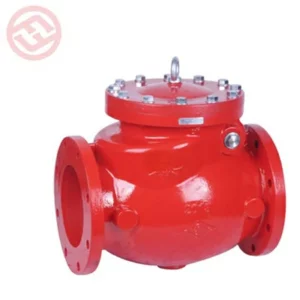Each fire sprinkler system needs a dependable source of water for immediate use in a fire emergency. Most systems use some combination of gravity tanks, municipal water supplies, and sometimes fire department connections to provide water to sprinkler heads. But while multiple potential water sources provide an extra layer of reliability to fire protection systems, they can also be problematic: drinkable water might be contaminated by water from a fire hydrant, or dirty water from fire sprinkler pipes might flow through nearby streets and into nearby drains. In many other applications, it’s simply important that water only goes one way for performance reasons. These include protecting equipment such as pumps and filters from backflow damage, stopping drainage in a fire sprinkler system with elevation changes, providing pressure relief in liquid or pneumatic applications, and more.
Check valves for fire protection prevent the unwanted reverse flow of water, known as backflow, from occurring. Many check valves feature a hinged clapper with a spring, which keeps the valve closed until the water flowing from some water source opens it. These clappers only open in one direction: when these flows reverse (or very nearly stop), the spring presses the clapper against a rubber seat, forming a water-tight seal.
Think of the water on either side of the clapper as the supply side (between the water source and the check valve) and the system side (between the check valve and the rest of the system). When a fire sprinkler head discharges, water is released, decreasing the pressure on the system side. Shortly after, the higher pressures from water stored or pumped from the supply side push open the clapper, and water flows through the system.
